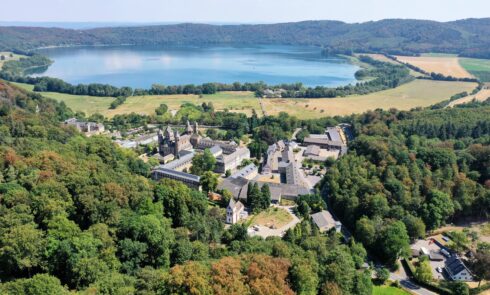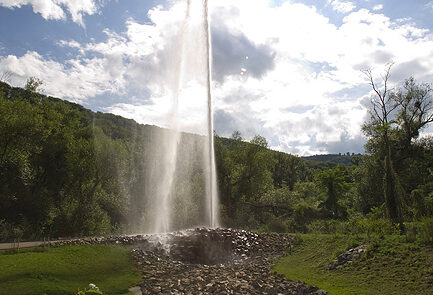In old sources, the Gänsehals, a place with a variety of peculiar legends and stories, is also referred to as Geissenberg or Geisberg. In the Middle Ages, a Landwehr, a structure for border fortification, ran eastward over the ridge of Gänsehals, of which ditch and rampart remnants are still visible in some places today. In 1844, remains of a tower were discovered on the summit of Gänsehals in the area called ‘Auf dem Sonnenberg’, which was known through oral tradition. It is not known when or by whom this tower was built. Part of the cemetery wall in Bell, built between 1846 and 1848 and still standing today, was constructed from tuff blocks of the former tower. Near the mountain summit, about 50 meters northwest, is the Gänsehals Tower, built from 1976 onwards. It is a 74-meter-high radio tower of the RWE subsidiary Amprion, which also serves as an observation tower. The tower was completed in 1977 and differs from other RWE towers in its construction of reinforced concrete. It stands at an altitude of about 560 meters and has an observation platform, which is said to be at a height of about 24 or 25 meters, depending on the source. From there, it offers a breathtaking panoramic view of the Eifel landscape, extending even to the Siebengebirge, the Bergisches Land, and the Westerwald.
In addition to the Traumpfad (very nice Hiking Trails) “Waldseepfad Rieden” the Traumpfad “4-Berge-Tour” also passes near Gänsehals. For reasons of traffic safety, the operator of the Gänsehals Tower closes the tower from the onset of the frost period until Easter. Condensation can cause ice to form, and visitors could slip and injure themselves on the smooth steps.


